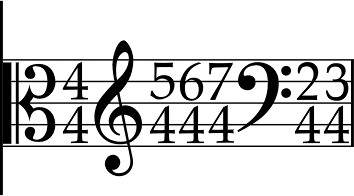
In this example of an early SCORE routine the beginnings of the parameter system (P2, P3 etc.) can be seen: BUZZ Īs vector graphics terminals became available in the early 1970s, the parametric approach to describing musical information that had been designed for MUSIC V was adapted by Smith into a program he called MSS (the standard abbreviation for manuscripts) for printing musical scores. The core concept of SCORE was to break music into a set of items ('objects' in modern terminology) with parameters that describe their characteristics. The first incarnation of SCORE was written by Leland Smith in 1967 as a means of entering music into the MUSIC V sound generating system running on the PDP-10 mainframe computers at the Stanford Artificial Intelligence Laboratory (SAIL).

Several publications set using SCORE have earned Paul Revere and German Musikpresse engraving awards. It was widely used in engraving during the 1980s and 1990s and continues to have a small, dedicated following of engravers, many of whom hold the program in high regard due to its ability to position symbols precisely on the page.

SCORE is a scorewriter program, written in FORTRAN for MS-DOS by Stanford University Professor Leland Smith (1925–2013) with a reputation for producing very high-quality results.


 0 kommentar(er)
0 kommentar(er)
